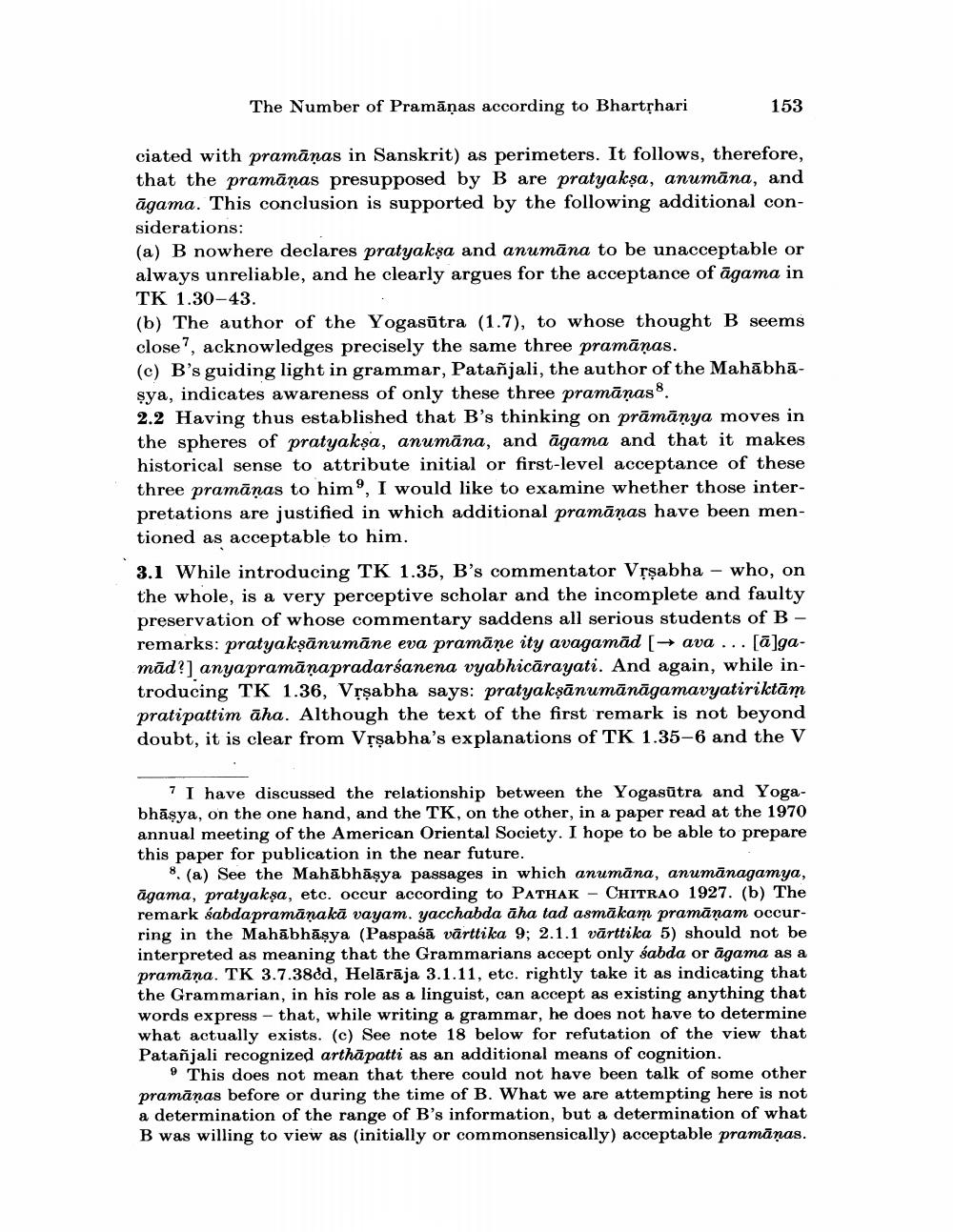Book Title: Number Of Pramanas According To Bhartrhari Author(s): Ashok Aklujkar Publisher: Ashok Aklujkar View full book textPage 3
________________ The Number of Pramāṇas according to Bharthari 153 ciated with pramānas in Sanskrit) as perimeters. It follows, therefore, that the pramānas presupposed by B are pratyakşa, anumāna, and āgama. This conclusion is supported by the following additional considerations: (a) B nowhere declares pratyakşa and anumāna to be unacceptable or always unreliable, and he clearly argues for the acceptance of agama in TK 1.30-43. (b) The author of the Yogasūtra (1.7), to whose thought B seems close?, acknowledges precisely the same three pramāņas. (c) B's guiding light in grammar, Patañjali, the author of the Mahābhāsya, indicates awareness of only these three pramāņas. 2.2 Having thus established that B's thinking on prāmānya moves in the spheres of pratyakşa, anumāna, and āgama and that it makes historical sense to attribute initial or first-level acceptance of these three pramānas to him, I would like to examine whether those interpretations are justified in which additional pramānas have been mentioned as acceptable to him. 3.1 While introducing TK 1.35, B's commentator Vrşabha - who, on the whole, is a very perceptive scholar and the incomplete and faulty preservation of whose commentary saddens all serious students of Bremarks: pratyakşānumāne eva pramāņe ity avagamād ( ava ... [@]gamād?] anyapramāņapradarśanena vyabhicārayati. And again, while introducing TK 1.36, Vrşabha says: pratyakşānumānāgamavyatiriktām pratipattim āha. Although the text of the first remark is not beyond doubt, it is clear from Vrşabha's explanations of TK 1.35-6 and the V 7 I have discussed the relationship between the Yogasūtra and Yogabhāsya, on the one hand, and the TK, on the other, in a paper read at the 1970 annual meeting of the American Oriental Society. I hope to be able to prepare this paper for publication in the near future. 8. (a) See the Mahābhāşya passages in which anumāna, anumānagamya, āgama, pratyaksa, etc. occur according to PATHAK - CHITRAO 1927. (b) The remark sabdapramānakā vayam. yacchabda āha tad asmākam pramānam occurring in the Mahābhāsya (Paspasā vārttika 9; 2.1.1 värttika 5) should not be interpreted as meaning that the Grammarians accept only sabda or agama as a pramāna. TK 3.7.38dd, Helārāja 3.1.11, etc. rightly take it as indicating that the Grammarian, in his role as a linguist, can accept as existing anything that words express - that, while writing a grammar, he does not have to determine what actually exists. (c) See note 18 below for refutation of the view that Patañjali recognized arthāpatti as an additional means of cognition. This does not mean that there could not have been talk of some other pramānas before or during the time of B. What we are attempting here is not a determination of the range of B's information, but a determination of what B was willing to view as initially or commonsensically) acceptable pramanas.Page Navigation
1 2 3 4 5 6 7 8
